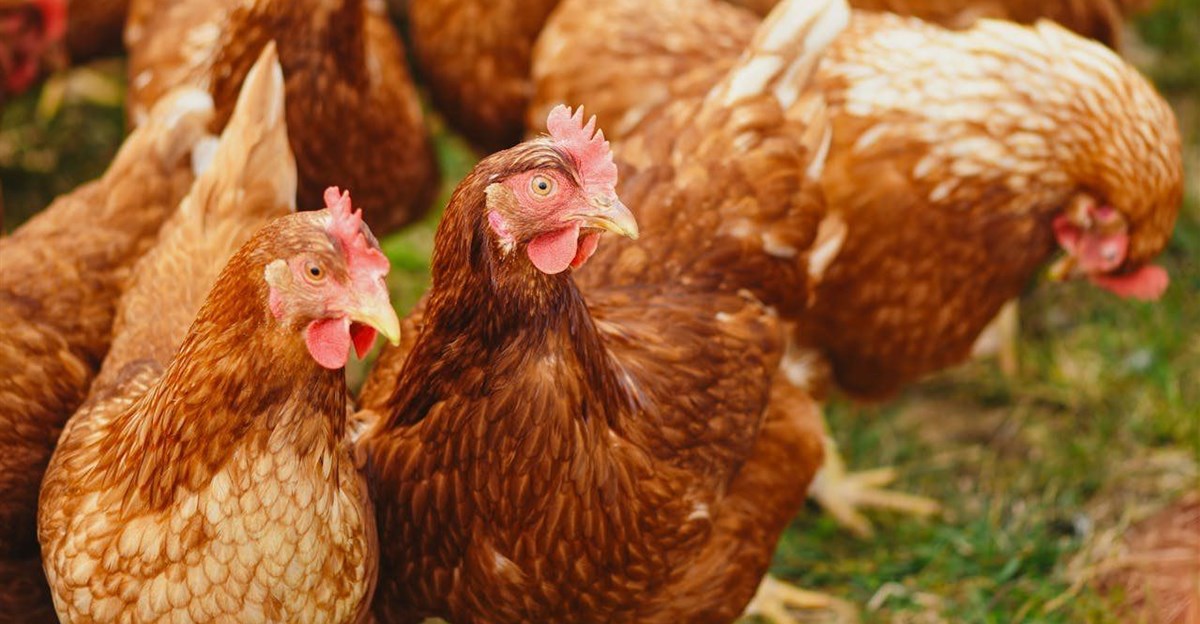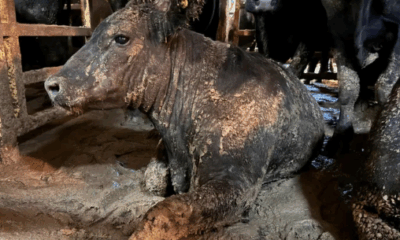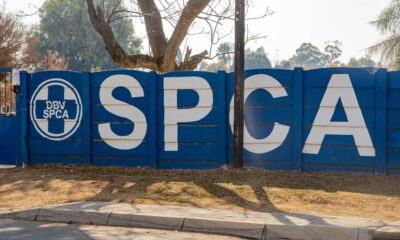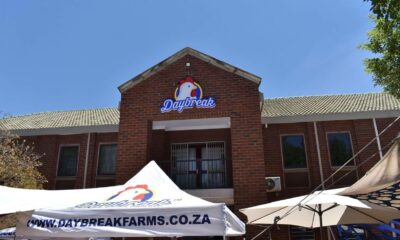Business
How a Once-Mighty Chicken Giant Fell Apart And Why Its Collapse Matters for Millions of South Africans

From Powerhouse to Crisis: The Unraveling of Daybreak Foods
A decade ago, Daybreak was a jewel in South Africa’s poultry industry. Today, it’s a cautionary tale about mismanagement, state investments, and the high cost of failure.
Ten years ago, Daybreak Foods was the kind of company that politicians proudly name-dropped at business forums. It had 3,400 employees, a thriving integrated chicken operation, and boasted an output that made it one of South Africa’s biggest poultry producers nine million birds every 34 days.
Fast-forward to 2025, and the company has landed in business rescue, its stability shattered, its CEO gone, and its farms so neglected earlier this year that the NSPCA had to cull over 350,000 starving chickens.
And the fallout goes far beyond the farm gates.
At the centre of the catastrophe sits the Government Employees Pension Fund (GEPF) the retirement savings of 1.26 million public servants and more than half a million pensioners. The fund has written off R176 million pumped into Daybreak’s business rescue and could lose far more from its R485 million historical investment.
For the largest pension fund in Africa, Daybreak has become one of its most painful missteps.
The Rise Before the Fall
A promising acquisition that spiralled into years of instability.
When the Public Investment Corporation (PIC) helped fund the 2015 acquisition of Daybreak then known as Afgri Poultry, the mood was optimistic. The PIC supplied R1.1 billion, with the GEPF providing nearly half a billion of that.
The plan was to expand an already-successful business.
Instead, the success story started to unravel.
By 2017, the PIC had bought the company outright due to “breaches” in the original investment agreement. Daybreak became state-owned with the GEPF holding 33.3%, alongside the UIF and Compensation Fund.
As the years rolled on, operational performance deteriorated. What used to be a fully integrated, well-oiled machine, from breeding to milling to packaging, slowly slipped into dysfunction.
By early 2025, Daybreak’s financial pressure had become impossible to ignore.
A Desperate Rescue Effort
Loans, resignations, and the moment everything fell apart.
In January 2025, the PIC extended a R250 million loan, hoping to keep Daybreak afloat. By March, R176 million had already been spent just to stabilise basic operations and try to execute a turnaround plan.
But then came the breaking point.
In March, after a wave of internal changes, Daybreak’s CEO resigned, worsening the instability. By June, the company formally entered business rescue.
At the same time, the public witnessed one of the most disturbing signs of collapse:
The NSPCA discovered chickens left without feed, staff who hadn’t been paid, carcasses piling up inside sheds, and widespread cannibalism among birds. Over 350,000 chickens had to be culled.
For a company that once prided itself on efficiency and scale, this was rock bottom.
The PIC soon released the remaining R74 million of the loan simply to cover unpaid employees and restore humane conditions for surviving chickens.
A Rescue Plan Full of Uncertainty
Daybreak’s future is now tied to a rescue practitioner, capital injections, and probable job cuts.
Daybreak’s creditors approved a business rescue plan in September 2025, led by practitioner Tebogo Maoto, who has been frank about the situation:
“To accelerate recovery, there has to be capital investment… we’re creating a runway to kickstart lean operations.”
The plan hinges on:
-
Restarting one abattoir,
-
Restarting one feed mill,
-
Bringing in an operating partner, and
-
Running on reduced capacity for the foreseeable future.
Currently, only two of the company’s five divisions are functioning. Around 500 jobs at breeding and hatchery farms have been stabilised, generating R20 million in cash so far.
But the sobering reality?
Retrenchments are coming.
Even reopening the abattoir won’t bring back the 1,000 workers it used to need. Daybreak simply cannot afford it.
Billions Lost And Tough Questions for the GEPF
A state-linked investment that turned into a money pit.
The GEPF’s annual report paints a stark picture:
-
R3.6 billion in unlisted investments written off this year alone
-
Daybreak among the worst-performing
-
Total capital commitment to Daybreak since 2015 now over R2 billion
For public servants watching their pension fund navigate turbulent waters, Daybreak’s collapse has sparked heated commentary:
On X (formerly Twitter):
“We worked 30 years for our pensions. Why are our savings used to bail out failing poultry companies?”
In worker WhatsApp groups:
“Another state investment gone wrong. When will it stop?”
Among industry insiders:
“Poultry is tough, yes, but this wasn’t about the market. This was about governance.”
A Bigger Story Than One Company
Daybreak’s collapse highlights a pattern and a warning.
South Africa’s poultry sector is notoriously volatile, hammered by load-shedding, disease outbreaks, high feed costs, and competition from imports. But Daybreak’s crisis cannot be blamed on market forces alone.
It reflects deeper issues:
-
governance failures in state-backed deals,
-
political interference,
-
mismanagement, and
-
a lack of accountability over billions in pension savings.
Daybreak is no longer just a business story.
It’s a national one, tied to food security, employment, and the retirement futures of more than a million workers.
Where to From Here?
Daybreak may survive business rescue. It may even recover in a leaner, more focused form.
But its fall from industry titan to financial burden is a reminder that state-linked investments need sharper oversight, and South Africans especially public servants, deserve transparency when their pension money is on the line.
As the rescue plan unfolds, one question looms:
How many more Daybreaks can the GEPF afford?
{Source: Daily Investor}
Follow Joburg ETC on Facebook, Twitter , TikTok and Instagram
For more News in Johannesburg, visit joburgetc.com



























